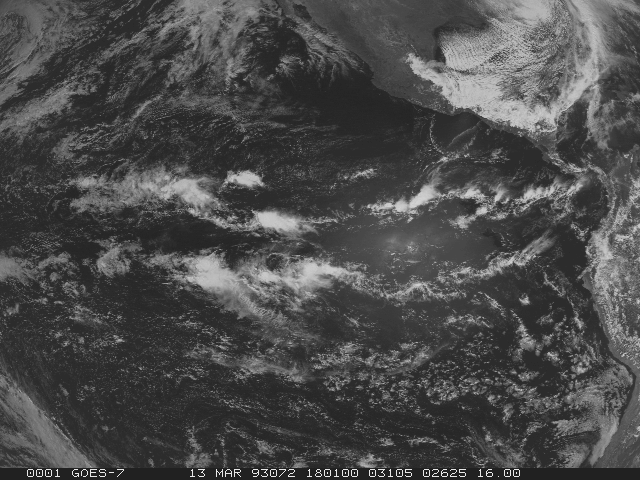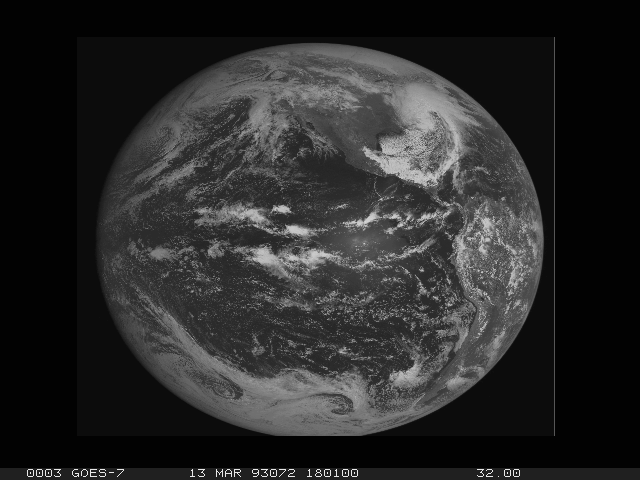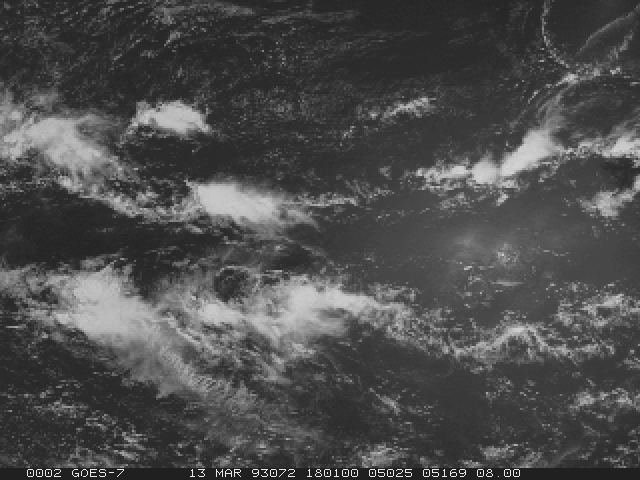



5.4 Satellite Imagery - Changing the Image Resolution
In this exercise, you will magnify the resolution of displayed images
using the IMGDISP command. Then, you
will use the IMGPROBE command to list
data values inside the cursor. Many other commands, for example
IMGCOPY, have parameters to change the
resolution.
- Display the GOES-7 Full Disk image in its original resolution (16 km)
on frame 1. Center the image on earth coordinates 0° and 112°.
- Type: IMGDISP BLIZZARD/G7-VIS-FD 1 LATLON=0 112

- Decrease (blow down) the image resolution of the GOES-7 Full Disk
image by a factor of 2 and display it on frame 3.
- Type: IMGDISP BLIZZARD/G7-VIS-FD 3 LATLON=0 112 MAG=-2 SF=YES

- Magnify (blow up) the image resolution of the GOES-7 Full Disk
image by factor of 2 and display it on frame 2.
- Type: IMGDISP BLIZZARD/G7-VIS-FD 2 LATLON=0 112 MAG=2 SF=YES

- Loop the frames.
- Press: Alt L
- Change the loop sequence to view the images in the order of
increasing resolution.
- Type: LS 3 1 2
- Show frame 1 and list the data and brightness values inside
the cursor.
- Type: PC C;SF 1;IMGPROBE LIST BOX BRIT MODE=N
Notice you have 5 lines and 5 elements of data.
- Show frame 3 and list the data and brightness values inside
the cursor.
- Type: SF 3;IMGPROBE LIST BOX BRIT MODE=N
Notice that you have 10 lines and 10 elements of data. Because
the image was blown down by a factor of 2, every second line
and element was sampled. Therefore, the number of lines and elements
read from the area is twice the amount displayed as an image. The
following equation determines the number of lines and elements
in the cursor area for a blow down:
- cursor size*blow down factor
which for this example is 5 * 2 = 10.
- Show frame 2 and list the data and brightness values inside
the cursor.
- Type: SF 2;IMGPROBE LIST BOX BRIT MODE=N
There are 3 lines by 3 elements of data listed. The following
equation determines the number of lines and elements in the
cursor area for a blow up:
- (cursor size-1)/blow up factor + 1
which for this example is [(5 - 1)/2] + 1 = 3.






